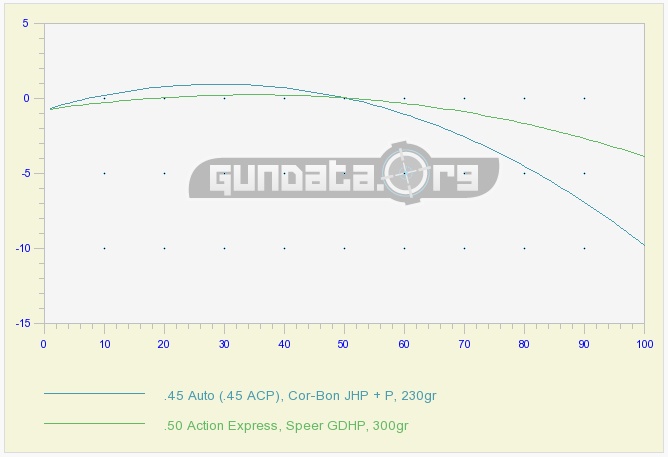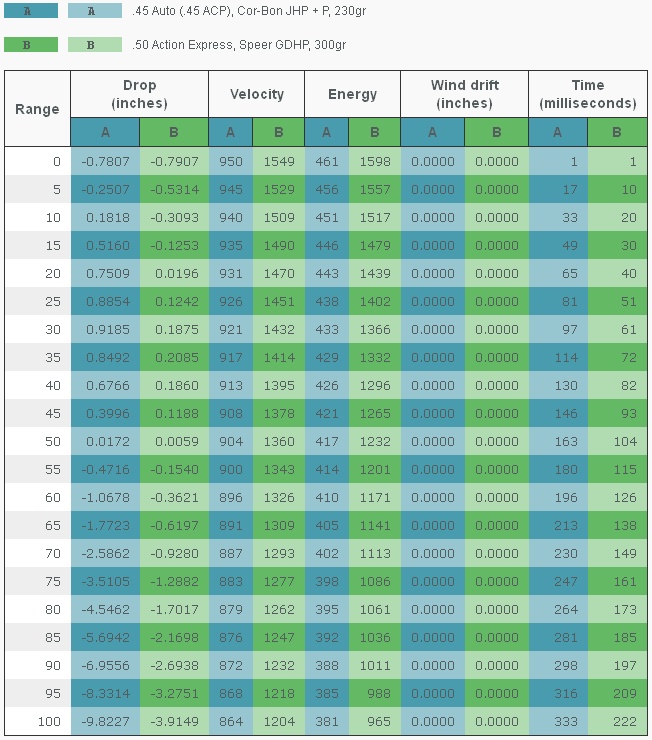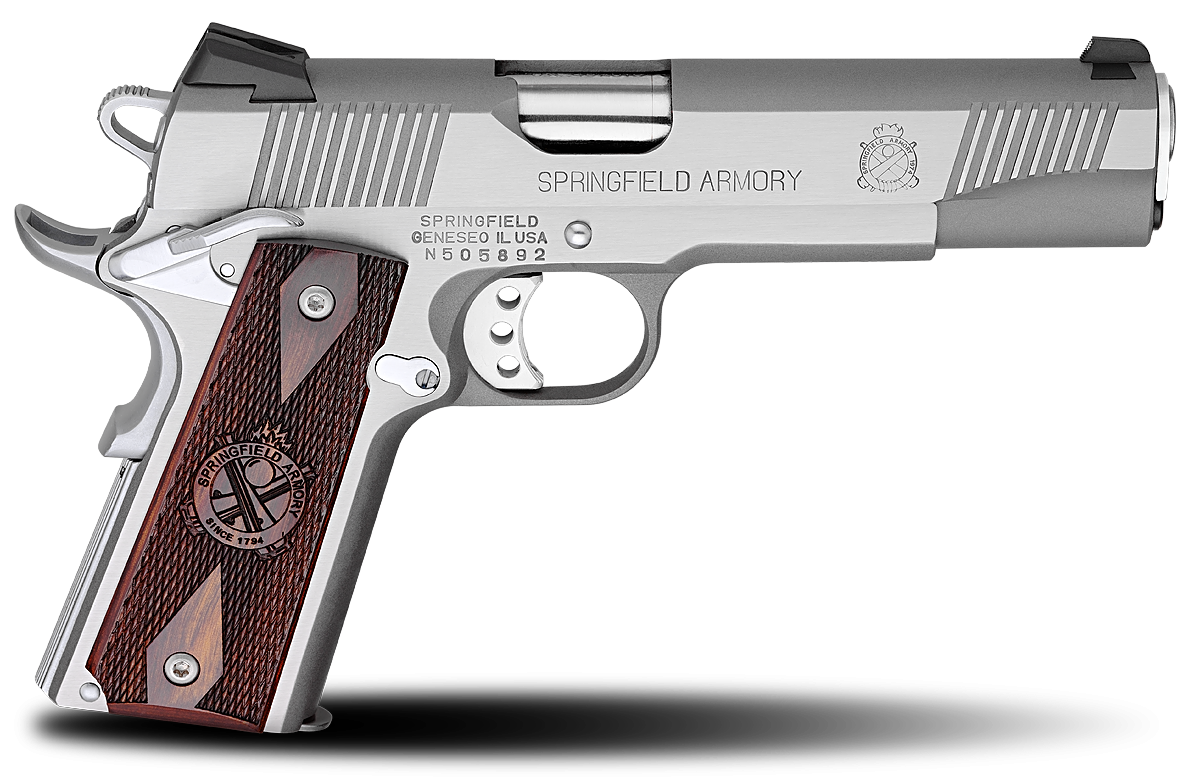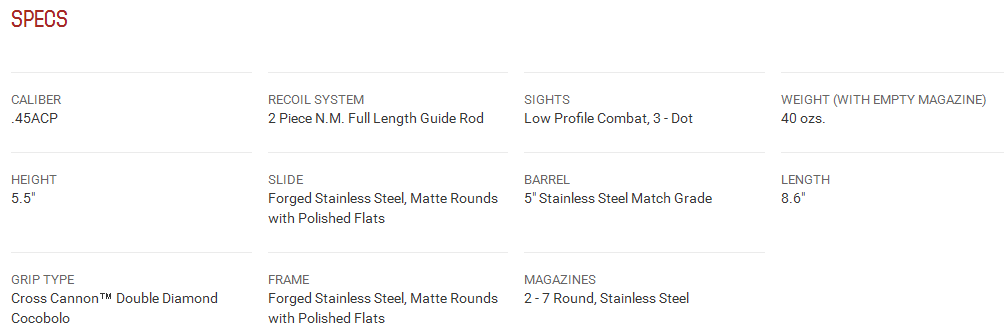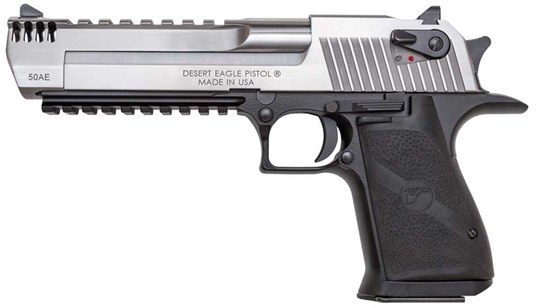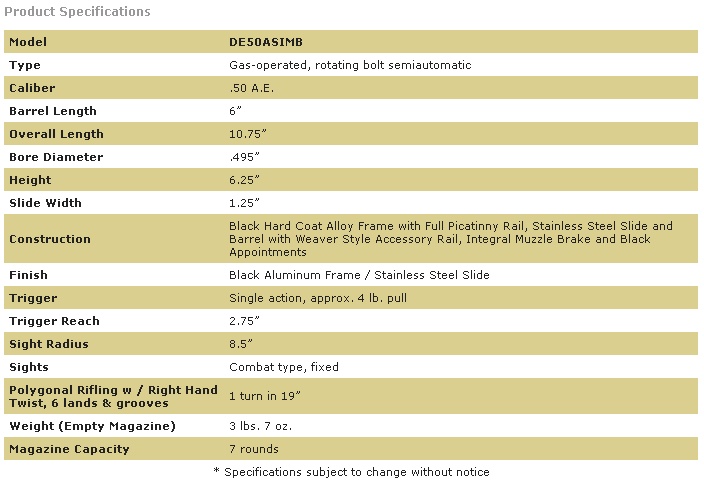A favorite of those who carry a pistol chambered in .45 ACP is, “I carry a 45 because they don’t make a 46!” When a police chief was asked why his officers had shot a man 100 times his response was simply, “That was all the ammunition we had!” Who says that we shooters don’t have a sense of humor?
The most common of calibers for carry are; the 9mm, the .40 Smith and Wesson, and the .45 ACP; where the .40 Smith and Wesson is essentially a 10mm cartridge; whereas the .45 ACP is an 11.46mm cartridge.
A .45 caliber bullet is actually 0.451 inches in diameter. Increasing the diameter to, say, 0.461 inches would still be in the 11mm range; 11.7mm to be more exact.
But, wait! They do make a 46! The Smith and Wesson .460 cartridge made by Hornady would be a fine example:
Premium components and propellants team with Hornady’s 200-gr. FTX bullets to produce a hard-hitting, flat-shooting handgun round capable of taking game out to 200 yards. These bullets leave the barrel at 2,200 fps and still retain more than 1,300 ft.-lbs. of energy at 100 yards.
Caliber: .460 S&W
Bullet weight: 200-gr.
Muzzle energy: 1,300 ft.-lb.
Muzzle velocity: 2,200 FPS
Bullet designation:
FTX: Flex Tip
Other Bullet designations:
JHP: Jacketed Hollow Point
XTP: Extreme Terminal Performance
SST: Super Shock Tip
FP: Flat Point
HP: Hollow Point
Well, gosh darnit! We can’t make that statement about shooting a “46” any more. Aside from the fact that anything larger than 11.46 millimeters, in a handgun cartridge, is heading in the direction of taking game much larger than the run of the mill bi-pedal type, it would be considered overkill to use it against an armed aggressor in most court systems – even if that was all you had. There is force, and then there is excessive force. But, there are.357 magnum and .44 magnum bullets with diameters smaller than the .45 caliber, and which have brought down plenty of game let alone a few bad guys along the way – not to mention the lowly .22 rim-fire cartridge.
I once owned a Grizzly Win-Mag chambered in .45 Winchester Magnum that was capable of sending a 0.452-inch 230-grain projectile downrange at 1,600 fps and with 1,307 foot pounds of energy at the muzzle. The cartridge and the pistol were deemed suitable for “metallic silhouette shooting and game.” The .45 Winchester magnum cartridge and the pistol was; however, short-lived but is still available today
The .45 GAP is an excellent round but, sigh, it is still 45 caliber. Obviously, we will need a larger caliber to satisfy our desire for better and more efficient stopping power in our everyday lives.
From .45 caliber (11.46mm), there is only one way up to go – the 12mm, and to be more exact, the 12.7mm! That’s right – .50 caliber! Bypass the .454 Casull, Smith and Wesson .460 and Ruger .480 and go straight to the action – the .50 Action Express to be exact. Or, if you are a revolver person, the Smith and Wesson .500 Magnum might work out for you. Since we are predominantly pistol carriers, I guess that we would have to suffer (I do meant that literally) with the .50 Action Express if we choose to carry the beast.
Putting puny puns aside, let’s take a look at a ballistic comparison between the lowly .45 ACP cartridge that many of us carry for self-defense and the reigning king of pistol projectiles – the .50 Action Express. Oh, my!
Using one of my favorite ballistic sites, GunData.org, I can pull together a comparison between a popular self-defense round in .45 ACP (Speer 230-grain Gold Dot Hollow Point) and another Speer product in .50 Action Express (300-grain Gold Dot Hollow Point). After all, there is only 80-grains difference in bullet weight between the two and we all know that bigger is better. The comparison is shown below. Note that I have chosen a sight height of 0.8 simply as a point of contention. The test barrel length is 5” in length for the purpose of the calculations.
There should be no dispute as to the flattest flying, highest velocity, and greatest energy bullet of the two compared. While the .45 bullet may have enough velocity to stop within the body of a 200-pound man, the .50 Action Express bullet may have enough energy to pass through the bodies of three men, a boy, and stop just inside the body of a Smart Car. Given the relatively short barrel length of five-inches, just imagine the velocity and energy of the .50 AE bullet with a longer barrel; such as a 10-inch barrel used for hunting. Should the target be of flesh, blood, bone and other bodily parts, the impact of such a bullet would sure cause some calamity, Jane!
We can’t stop there, though. We need to take a look at the firearms that launched these beasty bullets. Let’s just, for the sake of reference, say that a Springfield 1911 Loaded and a Desert Eagle was used. Specifications for the two pistols are shown below.
Obviously, both pistols are capable of launching their respective projectiles. In fact, the Desert Eagle would be more than capable of launching a .45 ACP rounds should it be chambered and configured for such. Given the weight of the pistol itself, felt recoil would be nary worth the consideration. The same cannot be said about the Springfield 1911 Loaded should it be chambered for .50 AE. Talk about a KA-BOOM! Houston, there has been a blow-out of the launching pad!
In reference to the weight and size of the launching platforms, the Springfield Loaded gets my nod. While, and at my age, it would be nice to be asked a question like, “Is that a Desert Eagle .50 AE that you are carrying, or are you just happy to see me?” I could not respond with, “Well, it is not a Desert Eagle!” To be honest, if I carried one of those short-barreled compact polymer-pistols and a similar question was asked, I would be highly embarrassed and my “man-card” would be in jeopardy.
I have shot (and still shoot) the .45 ACP cartridge in a suitable handgun. I have shot the Desert Eagle chambered in .50 AE, and to tell the truth, I need not shoot another one; the pistol is heavy and the recoil slightly above a good .44 magnum round. The .44 magnum is my upper limit these days while the .357 magnum is still preferred, as it is the most controllable of the two for me. Should I need raw power, the 15.621mm (.615 caliber, as in 20-gauge) is desired and I consider the 18.542mm (.73 caliber, as in 12-gauge) at the high end of my recoil tolerance level. In the fast and furious realm of calibers, there is the; 5.56x45mm, 7.62x39mm, 7.62x51mm, and 7.62x54Rmm that can fill the need for speed in many applications where such is needed.
However, we will continue our quest for firepower in ways personal to us all even if, at times, it goes against the grain of common sense. And, I have to admit that it is a lot more fun and satisfying than playing Whack-a Mole; unless of course, you have real moles and a high-powered rifle of large caliber.
As with life and laws, more power needs to be tempered by common sense.
![]()


